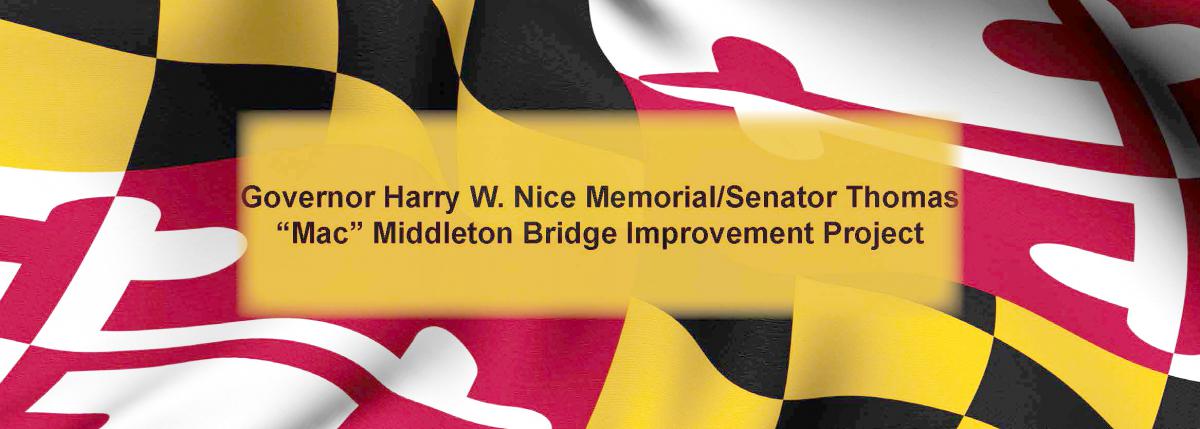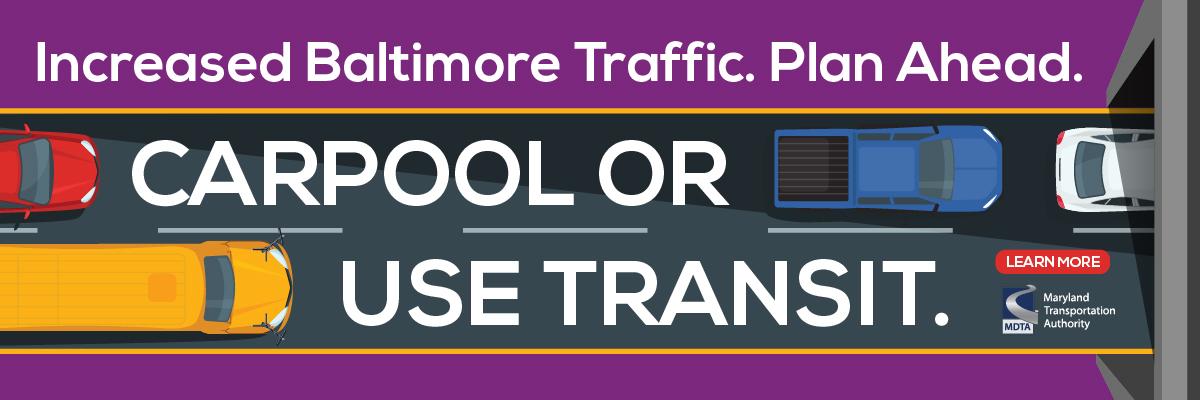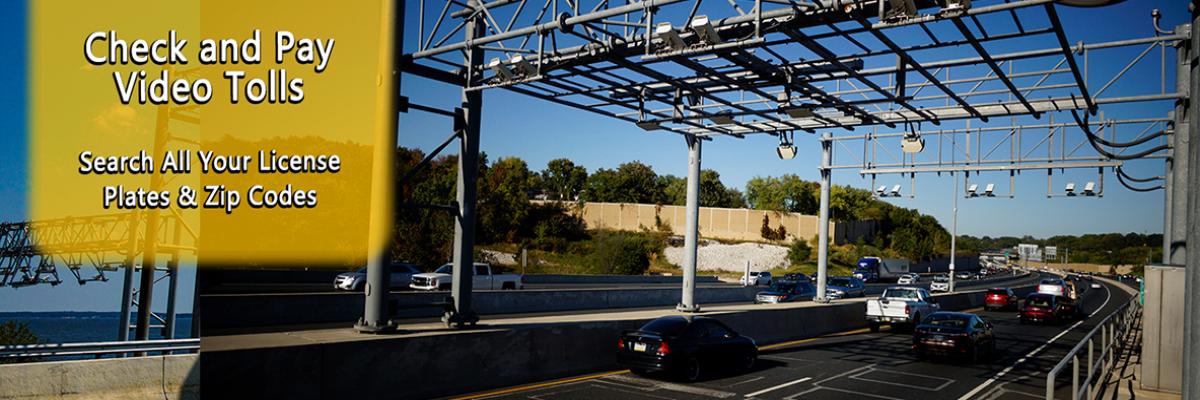
PUBLIC INVOLVEMENT
The public was encouraged to participate in the study and submit comments or join the project mailing list throughout the project planning process.
Public Hearings
Over 100 people attended the Nice Bridge Improvement Project's public hearings held on September 17, 2009 in Newburg, MD and September 24, 2009 in Dahlgren, VA. The hearings were held to allow citizens an opportunity to review and provide comments on the alternates and the Environmental Assessment (EA), which summarizes MDTA's efforts to date, including: environmental data collection; Focus Group meetings; Alternates Public Workshops; planning level engineering; environmental technical reports; consultation with federal, state, and local agencies and groups; and a detailed evaluation of alternates. Those attending were invited to comment on the project and the EA document through private or public testimony, and/or written comments.
- Nice Bridge Public Hearings Brochure (PDF 608KB Download)
- Information Displays
- Environmental Assessment (EA)
To view the displays from the Public Hearings held on September 17th and 24th, please click on the PDF document links provided below:
- Welcome.pdf
- Maryland Transportation Authority.pdf
- Meeting Layout Dr. Higdon ES.pdf
- Meeting Layout Potomac ES.pdf
- Project Purpose and Need.pdf
- Traffic and Safety.pdf
- Alternate 1 - No Build-Existing Environment.pdf
- Alternate 2 and Alternate 3.pdf
- Alternate 2 - Bike-Ped Option in Maryland.pdf
- Alternate 2 - Bike-Ped Option in Virginia.pdf
- Alternate 4 and Alternate 5.pdf
- Alternate 4 - Bike-Ped Option in Maryland.pdf
- Alternate 4 - Bike-Ped Option in Virginia.pdf
- Alternate 6 and Alternate 7.pdf
- National Environmental Policy Act.pdf
- Environmental Impacts.pdf
- Historic Properties-Section 106.pdf
- Section 4(f).pdf
- Interagency Coordination.pdf
- Project Timeline.pdf
- Related Projects.pdf
- How To Comment.pdf
During the public hearing comment period (August 14, 2009 to October 9, 2009), the public, resource agencies and elected officials provided over 160 comments via public and/or private testimony, comment cards, e-mail/electronic web comment form, and phone calls. Below are the Top 10 comments received:
- Include the bicycle/pedestrian path
- A build alternate is supported
- Specific design suggestions were given
- Accelerate the project / obtain funding
- Improve traffic congestion
- Improve safety
- Concerns about environmental impacts
- Concerns about emergency evacuation
- Economic Effects
- Concern about / recognition of potential impacts to Naval Support Facility Dahlgren
Spring 2007 Alternates Public Workshops
 The public provided a range of valuable comments at and following the May 31st and June 7th Alternates Public Workshops. The May 31st workshop was held in Newburg, Maryland followed by the June 7th workshop held in Dahlgren, Virginia which provided people living or working in either state the opportunity to attend. Members of the community had the chance to share what they envision for improvements to the Nice Bridge. The public provided comments by filling out comment cards at and following the workshops, by submitting the on-line comment form, and by speaking with project team members at the workshops. The project team took all comments received from the public and resource agencies into consideration when evaluating the proposed alternates.
The public provided a range of valuable comments at and following the May 31st and June 7th Alternates Public Workshops. The May 31st workshop was held in Newburg, Maryland followed by the June 7th workshop held in Dahlgren, Virginia which provided people living or working in either state the opportunity to attend. Members of the community had the chance to share what they envision for improvements to the Nice Bridge. The public provided comments by filling out comment cards at and following the workshops, by submitting the on-line comment form, and by speaking with project team members at the workshops. The project team took all comments received from the public and resource agencies into consideration when evaluating the proposed alternates.
Click here to view the proposed alternates, displays, and maps presented at the workshops.
To understand the different issues, preferences and concerns voiced by the public, the comments were sorted into seven categories:
The majority of comments received noted preference for a Build Alternate. Comments in support of building a new span(s) were a mix of preferences for a two-lane or four-lane span, north or south of the existing Nice Bridge:
- Prefer new four lane structure, keeping existing open during construction to maintain traffic flow.
- Prefer new span on north side, away from power plant.
- Prefer new bridge further north of existing bridge.
- Prefer new two-lane structure with opposing lanes of traffic separated by different structures.
- Prefer new four lane two-span bridge north of existing bridge.
- Prefer building alternates that are south of the existing bridge.
- Two separate bridges would be safer than Alternates 6 or 7.
- Prefer Alternate 7.
- Prefer Alternate 4.
- Alternate 3 is preferred long-term.
- Prefer Alternate 3 because avoids disturbing Wayside Park.
- Back-ups at the bridge on the weekend create difficulty for access into and out of the Cliffton on the Potomac community in Maryland.
- Need to ensure that access is maintained to the residences along Roseland Road in Virginia.
Natural Environmental Resources
- Concern for potential fog and smog on the bridge from the Morgantown power plant.
- Need to protect the natural environment if a new span is constructed.
- Need to preserve Wayside Park and its beach area in Virginia.
- Concern for protection of the Aqua-Land Marina in Maryland.
- Prefer a lower bridge height.
- Prefer a bridge height that will allow for the passage of tall ships.
- Drawbridges create traffic congestion.
- Include a bicycle/pedestrian facility on the crossing
Existing Bridge Issues (traffic/tolls)
- Concern for the narrowness of the Nice Bridge, current congestion on the bridge, the age of the structure and congestion generated from back-ups at the toll booths.
- Back-ups at the toll booths during the summer are not that much of an inconvenience.
- Maintain part of the existing bridge as a fishing pier if a new structure is constructed developed.
- Project schedule should be expedited.
- How is the project funded and what will it cost to build and maintain the bridge?
- What will the impacts be on taxes and tolls?
Four Focus Group meetings were held for the Nice Bridge Improvement Project. These meetings provided Focus Group participants with the latest news on the project and give participants an opportunity to relay information and local updates from their communities, businesses, and organizations to the project team.
Meeting #1
 Focus Group Meeting #1 was held on Tuesday, December 5, 2006 at the Dr. Thomas L. Higdon Elementary School in Newburg, Maryland. Meeting # 1 was an introductory meeting for the Focus Group where the project team presented background information including the project's purpose and need, which describes the reasons for studying improvements to the Nice Bridge. Click here to view the summary from Focus Group Meeting #1.
Focus Group Meeting #1 was held on Tuesday, December 5, 2006 at the Dr. Thomas L. Higdon Elementary School in Newburg, Maryland. Meeting # 1 was an introductory meeting for the Focus Group where the project team presented background information including the project's purpose and need, which describes the reasons for studying improvements to the Nice Bridge. Click here to view the summary from Focus Group Meeting #1.
Meeting #2
Focus Group Meeting #2 was held on Thursday, May 10, 2007, at the Naval Support Facility Dahlgren in Dahlgren, Virginia. The purpose of this meeting was to discuss the preliminary alternates and the information to be presented at the May 31st and June 7th Alternates Public Workshops. Click here to view the summary from Focus Group Meeting #2.
Meeting #3
Focus Group Meeting #3 was held on Thursday, January 24, 2008 at the Dr. Thomas L. Higdon Elementary School in Newburg, Maryland. The project team presented information on the proposed Alternates Retained for Detailed Study (ARDS) and the related environmental documentation. Click here to view the summary from Focus Group Meeting #3.
Meeting #4
Focus Group Meeting #4 was held on Tuesday, February 10, 2009 at the Potomac Elementary School in Dahlgren, Virginia. The project team presented the refined Alternates Retained for Detailed Study (ARDS) including draft provisions for a bikeway facility, information on the Draft Environmental Assessment (EA), and information regarding the fall 2009 public hearings. Click here to view the summary from Focus Group Meeting #4.
What was the Focus Group's Role?
 The MDTA often will form a Focus Group to supplement typical public involvement activities during project planning. Focus Groups bring together a cross-section of community representatives in the study area who meet periodically with the MDTA as the study evolves. The group does not issue formal recommendations or make decisions. However, by meeting regularly in a small group, members become knowledgeable of the issues and provide the project team with a valuable local perspective as the project planning study progresses.
The MDTA often will form a Focus Group to supplement typical public involvement activities during project planning. Focus Groups bring together a cross-section of community representatives in the study area who meet periodically with the MDTA as the study evolves. The group does not issue formal recommendations or make decisions. However, by meeting regularly in a small group, members become knowledgeable of the issues and provide the project team with a valuable local perspective as the project planning study progresses.
The Nice Bridge Focus Group represented the interests of the area around the Nice Bridge. Focus Group members were requested to share the project information they received with the community or organization they represented, and to report any feedback. The diverse membership of the group provided a range of viewpoints on the project planning study.
Section 106
Section 106 of the National Historic Preservation Act required MDTA to seek and consider comments from the public regarding effects of the Nice Bridge Improvement Project on historic standing structures and archeological resources. The views of the public are essential to informed decision making in the Section 106 process. Throughout the project planning studies, MDTA coordinated with the public regarding the project and its effects on historic properties.






